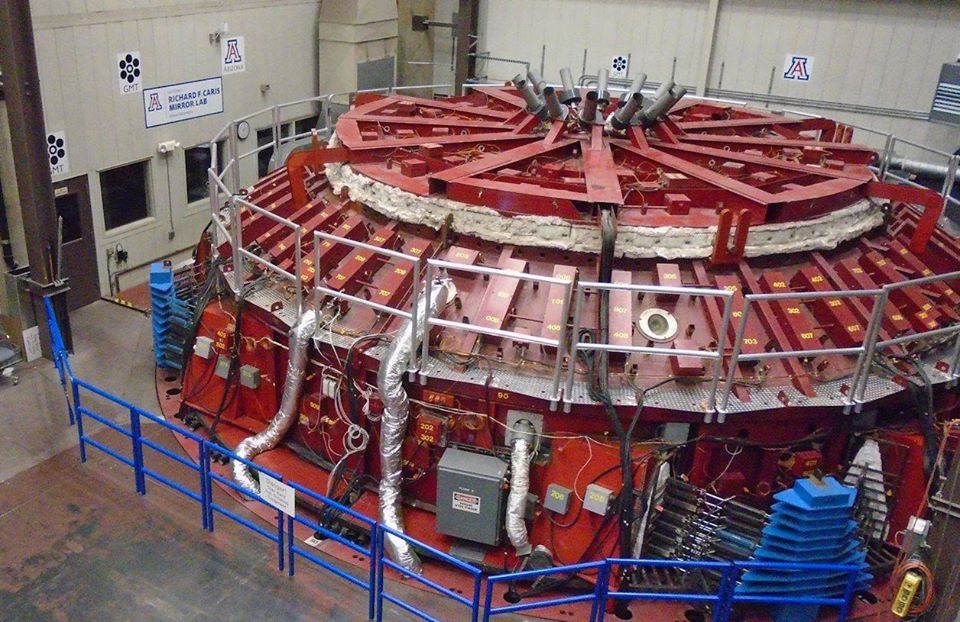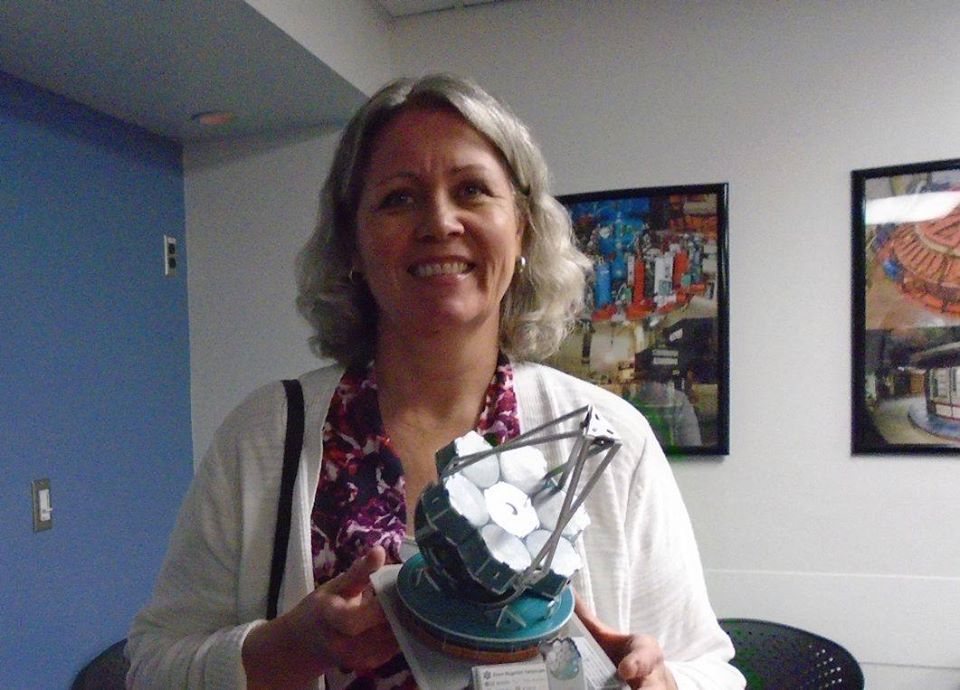Chrissy, Carl Hankwitz & I went to the Mirror Lab at University of Arizona. Arizona is the leading school for optics in the U.S. The Mirror Lab is making mirrors for the Giant Magellan Telescope (GMT).
GMT will be ten times as powerful than Hubble. The problem of looking through earth atmosphere has been addressed with adaptive optics. As the guide said, adaptive optics takes the twinkle out of the stars.
GMT will be assembled in the desert in Chile, which is driest place on earth, so the dry air and lack of clouds will make the telescope even better. GMT is expected to see to the edge of the known universe, as far as only 300 million years after the big bang. More information about the universe will be available in the next decades than in all the previous centuries. The challenge is too MUCH information. Astronomers are developing algorithms to help decide where to look.
Science seems to have a half life of around 25 years. Lots of what we thought we knew turns out to be at least partially wrong. The Hubble was the best and was the ultimate in telescopes. Now we will have one ten times better and this is probably not the end of the line.
The pictures show Chrissy with a model of the GMT. The next is a giant furnace. It melts glass into molds that look like honeycombs. The furnace rotates and forms the lens into a parabola for a mirror that focuses light above the array. The last picture is a polisher, that smooths the lens.



